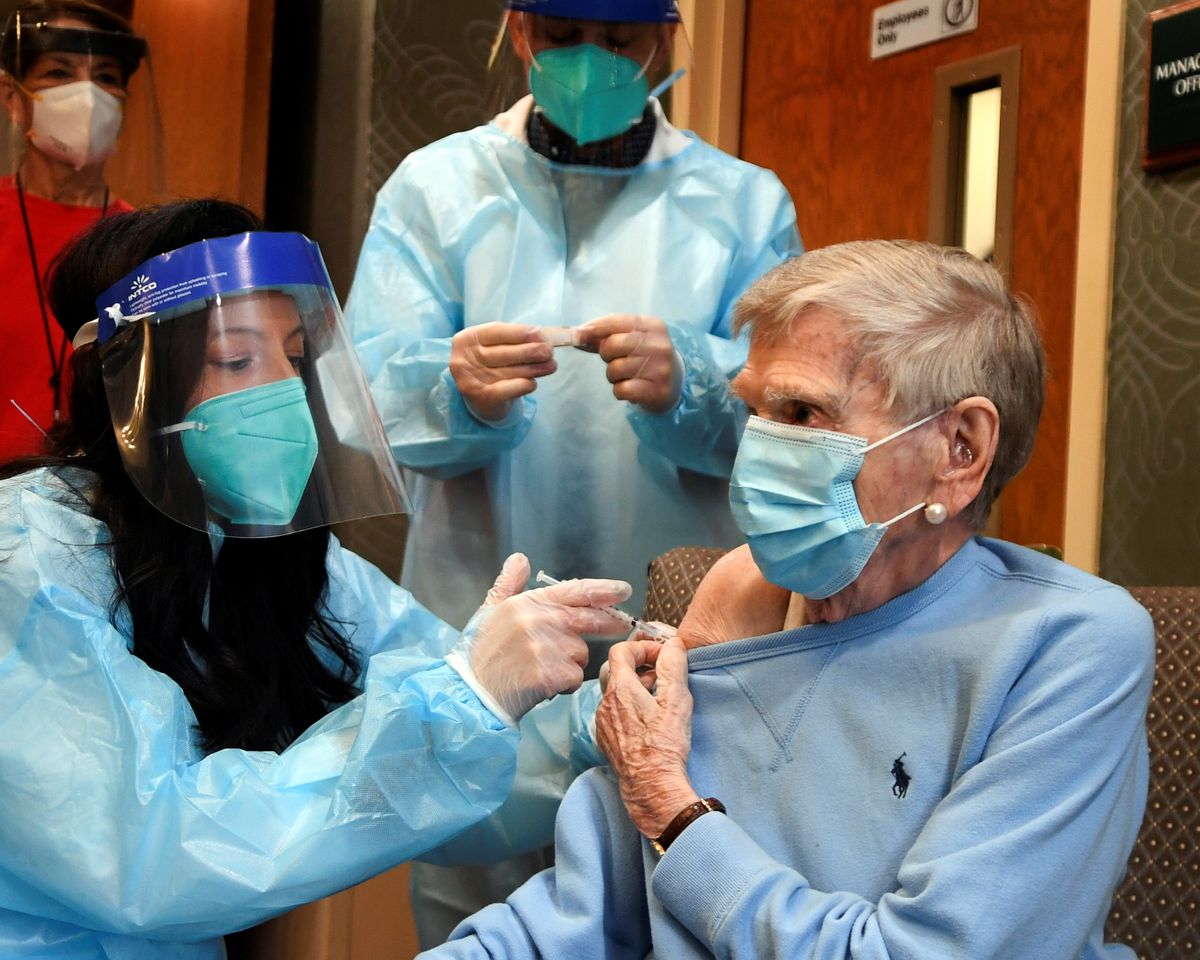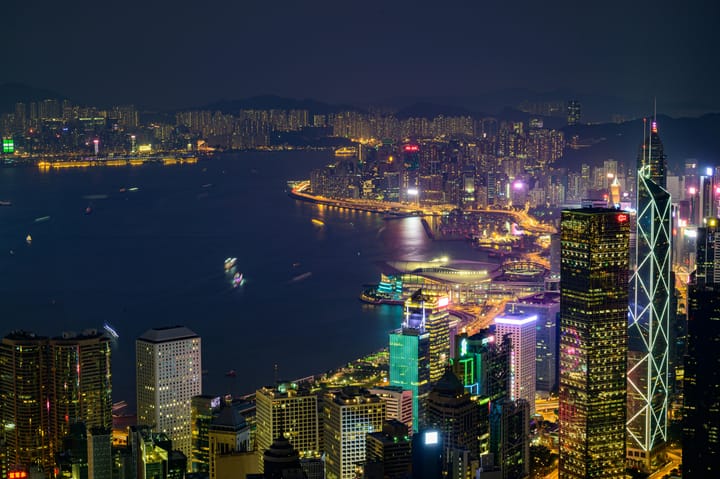The 5 biggest news stories of 2020

A few minutes every morning is all you need.
Stay up to date on the world's Headlines and Human Stories. It's fun, it's factual, it's fluff-free.
Here are the news stories that defined 2020 and changed the world.
In any given year, countless events shape nations and the lives of those around the world. On an individual level, the biggest news stories of any given year are often those that the vast majority of people were never even aware happened. Yet, even as the population worldwide grows and political divisions harden, our interconnected world ensures the biggest stories unite us all.
In 2020, nothing proved that more than the COVID-19 pandemic, a global crisis that touched every aspect of life, from politics to the arts, from the economy to mental health. Unquestionably, 2020 will be remembered as the year of the coronavirus.
It was, however, also a year of deadly international conflicts, the intensifying spread of misinformation, and a deepening political divide between populism and progressivism.
Here are the news stories that defined 2020 and changed the world.
5. The spread of misinformation and conspiracy theories
Though misinformation and conspiracy theories have always been around, 2020 may go down as the year they congealed into a nearly unstoppable force.
Nowhere was this mix of conspiratorial thinking and factual distortion more perfectly aligned than with QAnon, the pro-President Donald Trump conspiracy theory that claims a satanic cabal of elites is sexually abusing and feasting upon children.
Though the movement began back in 2017, it exploded this year thanks to COVID-19 misinformation, Trump’s conspiracy-mongering and the strategic manipulation of social media.
Which is not to say that QAnon was the only source of misinformation this year. The pandemic created a perfect storm for conspiracies about 5G technology and Russian disinformation campaigns (which were already targeting the United States presidential election). Intentional misinformation was also spread about the west coast wildfires in the US and the alleged rise of far-left extremism.
And while some may dismiss conspiracy theories and disinformation campaigns as overblown distractions, 2020 also proved that misinformation could be deadly, especially when mixed with a pandemic.
4. Continuing international conflicts
The year began with the US and Iran on the verge of war after a US airstrike killed Qasem Soleimani, one of Iran’s top military leaders. After swift retaliation, both nations stepped back from escalating the conflict, though tensions between the nations have remained high.
In January, the trade war between China and the US began to ease with the hope that both countries would quickly recover from its impact. Unfortunately, the pandemic quashed those hopes and worsened relations between the two nations. Trump has frequently blamed China for what he has dubbed the “China Virus,” while the economic ties between the two nations remain fraught.
China has also faced an economic conflict with Australia and a deadly border dispute with India. As the year entered its last months, it was reported that Chinese President Xi Jinping was warning his military to prepare for war. This was in response to Taiwan’s efforts to build a diplomatic relationship with the US.
This year also saw a reignited war between Armenia and Azerbaijan in Western Asia over the disputed region known as Nagorno-Karabakh (in Azerbaijan) or Artsakh (in Armenia). The countries have been in conflict for decades and while a peace accord was reached six weeks after fighting began, for many in Armenia, the peace agreement represents a surrender that may not stand for long.
There were some positive signs of improving geopolitical relationships throughout the year. In February, the US and Taliban agreed to a temporary truce, while in March a cease-fire in Syria was reinforced. In both situations, there are regional troubles that undercut the peace (including millions of displaced Syrian refugees), but peace, even if temporary, was still a welcome reprieve.
The Trump administration also helped oversee a historic peace accord between Israel, the United Arab Emirates and Bahrain. While the nations were not at war, the Abraham Accords officially created economic and social ties between Israel and Arab nations for the first time in over two decades.
3. The fight for social and racial justice
The police killings of multiple Black Americans were the catalyst for months of protests, riots and, at times, violent confrontations between protesters, law enforcement, and counterprotesters. While such protests had occurred in previous years, in 2020 they expanded across the world as a growing number of people of all races joined the demonstrations.
Initiated by the Black Lives Matter (BLM) movement, these protests have sought to bring greater attention to racial inequality in the country and to put a focus on police misconduct. The protests have also opened up a broader debate over reallocating funds from police departments and the role protest can have in lasting systemic change.
The BLM protests, which have taken place in all 50 states and around the world, have been mostly peaceful, yet violent, even deadly, clashes have occurred. Protesters and counterprotesters were killed over the summer. At times, far-right white supremacist groups caused property damage and destruction to undermine both BLM and anti-fascist (“Antifa”) activists.
Meanwhile, in Hong Kong, protesters have been demonstrating against the Chinese Communist Party’s efforts to assert control over the region. The pro-democracy protests have sought to reclaim Hong Kong’s autonomy at a time when China is attempting to consolidate its authority in the region. Hong Kong police and protesters have clashed violently and many protesters have been arrested.
Half a world apart, the BLM and Hong Kong protests have much in common, both in philosophy and method, but there remains political division. Whereas conservative Republicans, including Trump, have condemned BLM, the Trump administration has expressed support for the Hong Kong protesters.
Many Hong Kong citizens were rooting for Trump’s reelection, believing that his willingness to challenge Xi on trade meant he would stand up to mainland China.
2. The US presidential election
Though the US media can often myopically portray American politics as the center of the world, this year’s US presidential election was unquestionably a global concern. After four years of President Trump challenging US allies, building friendly relationships with dictators, leaving peace treaties, and disrupting long-standing economic relationships, the 2020 election was closely watched around the world.
The year began with the Democrats preparing for the primary season as dozens of candidates looked to challenge Trump. By the time the primaries officially began with the Iowa caucus in February, it was clear the front-runners were eventual winner Joe Biden, Senators Bernie Sanders and Elizabeth Warren, and Mayor Pete Buttigieg.
As February ended, it looked as if Sanders might have the momentum, but March 3, Super Tuesday, put Biden in the driver’s seat and he never lost the lead after that. A month later, Sanders suspended his campaign and Biden became the presumptive Democratic candidate for president until he was officially nominated at the Democratic National Convention in August.
While there were many policy differences between Biden and Trump, the campaign was rarely about governance. Instead, much of the focus was on personality differences between the two candidates and the contrast between Trump, the outsider, versus Biden, the Washington insider of four decades.
Throughout the campaign, Biden regularly led in the polls. However, there was considerable uncertainty over how the election would be held amid the pandemic. Democrats pushed for making voting safer by allowing mail-in ballots, but Republicans pushed back, insisting they would lead to greater fraud. Trump repeatedly used his Twitter account to make false claims about voter fraud.
As was expected, the results of the election weren’t known immediately on November 3, in part because of the increased number of early and mailed votes. As the days slowly trickled by, it gradually became clear that Biden was pulling ahead, but Trump and his Republican allies refused to accept the results.
Trump’s lawyers filed dozens of lawsuits to overturn state results, but their efforts failed. The goal of reversing the election in Trump’s favor was dealt a fatal blow when a last-ditch effort by Republican-controlled states to overturn the election results was shot down by the US Supreme Court.
On Monday, December 14, the electoral college certified President-elect Biden’s victory. He became the first candidate to defeat an incumbent president since 1992. The victory also paved the way for Senator Kamala Harris to break multiple glass ceilings: she will be the first woman, Black person, and person of South Asian descent to serve as vice president of the US.
1. The COVID-19 pandemic
There might not be a journalist working this year who hasn’t begun at least one sentence with, “Amid the pandemic …” A lot has happened in 2020, but almost nothing has happened that wasn’t in some way worsened, canceled or postponed because of COVID-19. Though the first cases were discovered at the tail end of 2019, the virus will be forever associated with 2020.
While there were reports in January that the virus had left Wuhan, China, and was spreading throughout the world, it wasn’t until March 11 that the World Health Organization declared it a pandemic. Within days, the impact of the coronavirus was being felt globally, as many countries went into lockdown and Trump declared a national emergency.
As the weeks of restrictions turned into months, global economies suffered. On the individual level, many people struggled mentally with social distancing or were subjected to increased incidences of domestic abuse. The virus also revealed racial health disparities in the US, while hospitals in some of the worst-hit regions, especially New York City, were overwhelmed with patients.
In some states, protests over restrictions erupted, egged on in part by Trump who often contradicted the advice of his own coronavirus task force. The result was an at-times disorganized federal response that failed to quell the virus’s spread. Even the COVID-19 relief package that paid US$1,200 to American citizens had its issues and did little to help millions facing evictions and joblessness.
Around the world, some countries successfully combated the pandemic with strict rules, others faced wave after wave of the virus even with restrictions, and Sweden attempted to ride out the pandemic with little-to-no official guidelines. In the US, where the response to the pandemic became politicized, the virus has never abated and hospitals around the country remain overwhelmed.
Some positive news came in November when it was announced that vaccines from Pfizer and Moderna had been successfully created and were near approval. The rollout plans for mass vaccination are expected to take months and supplies of the vaccine remain finite, but there is new hope that normalcy could return in 2021.
In October, Trump was diagnosed with COVID-19, which proved to be a perfect storm of major news events as it led to conspiracy theories and uncertainty about the presidential election. After Trump and his wife, Melanie, both recovered, the president didn’t change his tune on the virus and has continued to insist his administration’s response was “tremendous.”
We have made tremendous progress with the China Virus, but the Fake News refuses to talk about it this close to the Election. COVID, COVID, COVID is being used by them, in total coordination, in order to change our great early election numbers.Should be an election law violation!
— Donald J. Trump (@realDonaldTrump) October 26, 2020
With cases of COVID-19 and related deaths on the rise throughout the US and a post-holiday surge feared going into 2021, it will now be up to President-elect Biden to lead the effort to make the virus, in Trump’s words, disappear.
Have a tip or story? Get in touch with our reporters at tips@themilsource.com




Comments ()